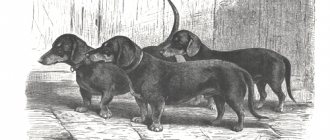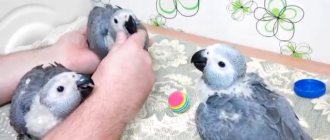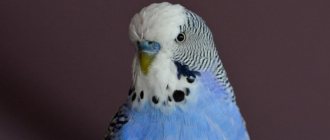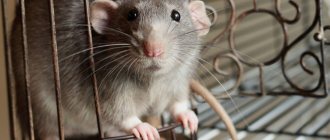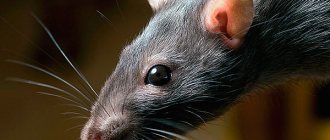Pit bulls are good protectors for their owners if well trained.
Dogs of this breed have developed skeletal muscles and a powerful chest.
Due to their high physical characteristics, they were used for fighting and bull baiting.
But despite the purpose of their breeding, pit bulls are not aggressive.
These are smart and stubborn animals, for whom it is important to show their place in the hierarchy.
If a dog perceives its owner as a leader, then with good training it will become an obedient pet.
Are they easy to train?
Pit bulls, like Staffordshire terriers, were originally bred for dog fighting, so adults are difficult to train. Dogs of this breed are stubborn.
To get an obedient pet, you will have to raise the animal from puppyhood.
Pit bulls should only be purchased from reputable kennels - this way you can avoid buying a mixed breed. You need to choose a calm and balanced cub who is not prone to aggression.
To do this, you need to talk with the dog breeder, find out from a specialist about the character of the animal, its behavior and attitude towards people. You should buy puppies without hereditary diseases .
The relationship between the owner and the pit bull should be built without violence. At the same time, it is important to show the dog who is the dominant leader in the house. If the dog understands its position in the hierarchy, then in the future the animal will be easier to train .
Feeding
When feeding pit bull terriers naturally, it should be taken into account that the main component of proper nutrition should be proteins: meat, fish, liver. Be sure to add foods such as cottage cheese, cereals, eggs, fermented milk products, vegetables and fruits to your diet.
The serving size should be such that the dog feels full, and not heaviness in the stomach from overeating.
Be sure to adhere to the established feeding regimen and avoid foods from the table. Products such as baked goods, pasta, sausages, and sweets will not benefit the animal. It happens that a dog really loves chocolate, and the owner, in order to please it, sometimes treats it with a piece. This should not be done under any circumstances. If your pet has a sweet tooth, you should go to a pet store and purchase special chocolate for dogs. It is completely safe for your pet's health.
Chocolate for dogs can be white, milk and even bitter. However, it does not contain prohibited substances.
When feeding your pit bull terrier dry food, you won’t have to come up with a daily menu yourself and waste time on cooking. Dry food is fully balanced and fortified. Naturally, if it is premium food, and not lower.
In the description of each food you will find its composition and the required daily dose for the dog.
Can it perform security functions and protect the owner?
Despite many stereotypes, pit bulls are loyal pets . With the right relationship, they will love not only their owner, but also his entire family and friends.
At the same time, the dog will treat strangers unknown to its owner with suspicion.
The pit bull breed is distinguished by well-developed muscles with a voluminous chest and short legs. Thanks to such a stocky build, they become good protectors for their owner and his home.
During a fight, male pit bulls produce large amounts of testosterone, which strengthens skeletal muscles and reduces sensitivity.
Therefore, the dog will not only warn a potential enemy with a powerful bark, but will also attack him. To train a dog to attack or to do nothing is an individual decision of the owner.
Pit bulls have a keen sense of smell and hearing . Thanks to their developed sensory perception, they can assess the level of threat to a person from afar and come to his defense.
Kangal karabash
The height of an adult reaches 90 cm, weight is 45-70 kg. Karabash has a large build, well-developed muscles, and a slightly elongated muzzle. The forelimbs are slightly shorter than the hind limbs. The nose is black, the eyes are deep-set and dark in color. The ears are triangular, drooping on both sides, and are not cropped. The tail is long, set high, curled into a ring, and raised. Animals come in any color, but you can mostly see red, sandy or gray-brown obeys. A distinctive feature of the karabash is the “mask” on the muzzle.
The Turkish Cattle Dog or Turkish Wolfhound is very hardworking, intelligent and independent, not prone to aggression, but if trouble threatens, it will certainly rush to protect its owner. Karabash gets along with children, but he has neutral relationships with other pets. For the owner, this is an excellent loyal friend, companion, protector.
At what age should training begin?
Pit bull training is prescribed from the age of 2 months, when the dog begins to acquire social skills . During this period, it is easier to raise a pit bull and begin to teach it to follow commands.
In puppyhood, new skills are acquired quickly, within a few days, and unconditioned reflexes are developed.
Thanks to the high functional activity of the nervous system, puppies quickly adapt to new conditions and get used to their place in the hierarchy.
The dog owner must constantly monitor compliance with the rules in the house and on the street, and require the pet to follow commands. In the future, it will be more difficult to wean an animal from any habit.
In addition, 30 kg of live weight with developed muscles is difficult to stop.
Development from 1 to 12 months
| Age | Size (height) | Weight | Description |
| 1 month | 20-25 cm | 2.5-4 kg | Immediately after birth, the puppy is almost completely dependent on its mother. Of all the reflexes, he only has: sucking, motor, olfactory and tactile. A newborn baby's ears and ears are closed, and there is no thermoregulation. By the end of the first month, the baby's eyes and ears open and he begins to actively explore the world, eat solid food and play with his fellow tribesmen. |
| 2 months | 25-30 cm | 6-9 kg | The 2nd month is called the period of first socialization. At this age, puppies are separated from their mother and find new owners. |
| 3 months | 30-36 cm | 9-14 kg | The baby is actively growing, gaining weight and changing significantly in appearance. At this age, the dog’s future exterior begins to be visible, the musculoskeletal system is actively developing and teeth begin to change. |
| 4-5 months | 35-45 cm | 14-24 kg | The pet grows and develops at a very fast pace, and a relationship between it and the owner begins to be established. At this age, the change of teeth is completed. |
| 6 months | 40-48 cm | 23-28 kg | Early adolescence. The puppy learns the meaning of the hierarchy and tries to find its place in it. At this age, pets can become stubborn and disobedient. Growth and development slow down by the end of the 6th month. |
| 7 months | 45-50 cm | 28-35 kg | The puppy begins to show sexual activity, and also tries to take the highest possible place in the domestic hierarchy. At this time, females are already in heat, and males become more active and can show aggression. |
| 8 months | 48-50 cm | 30-35 kg | At this age, the puppy increasingly takes on the appearance of an adult dog, and also begins to exhibit character traits that will be characteristic of it throughout its life. |
| 9-12 months | 48-50 cm | 30-35 kg | By this age, the pet’s body is almost completely formed. The exterior and character are also formed. If before this time it was not possible to teach the puppy the rules of behavior and commands, now it will be much more difficult to do so. |
Where to start education?
Training puppies requires patience and affection..
From the moment you acquire a pit bull, you need to start taming it to your hands and its name. It is necessary to help the animal adapt to the presence of other people and pets.
The dog should not be afraid of loud noise, bright colors, sharp sounds . The dog should be accustomed to the toilet and daily routine.
When walking outside begins, it is necessary for the puppy to get used to his collar and leash.
You cannot use equipment as a means of punishment, otherwise the puppy will hide at the sight of accessories in the hands of the owner and run away . To train a pit bull up to 4 months old, each skill should be given 10 to 15 minutes every day.
At the same time, it is necessary to remain calm and treat training responsibly. Gradually, the time for training increases, as does the volume of skills acquired by the dog.
Training continues for 7-12 months.
Expert opinion
Kozhevin Semyon Kirillovich
Expert dog handler.
A dog of this breed is stubborn, not suitable for beginners and requires training at the age of 2 months. Basic commands can be established up to 4 months of age. For training, you need a balanced, active pet with no chronic diseases. Education takes place in a playful way; it is necessary to change the intonation so that the puppy knows when he is being praised or scolded. There is no need to punish the dog or show fear in its presence; it is necessary to suppress all attempts at a playful bite or attack by the puppy on a person. At such moments, you need to turn the pit bull on its back and hold it for a few seconds to show your dominance.
Features of caring for a puppy at home
Caring for a small pit bull is more troublesome than caring for an adult dog. A puppy requires more time and attention. He needs to be toilet trained and follow a strict routine, as well as fed and taken out for walks more often.
Until the puppy has received all its vaccinations, it should not be placed on the ground - it can catch an infection from an animal running there.
Until 4 months, a small pet should not be allowed to jump from heights or go down stairs on its own. A weak puppy can get injured or have bad posture.
In order to raise a stately pit bull terrier from a clumsy baby, he needs to create the correct feeding regimen:
- A 3-4 month old puppy is given food 5 times a day.
- At 4 months he is transferred to 4 feedings a day.
- At 6 months the pet is fed 3 times a day.
- A one-year-old Pit is given food twice a day.
How to toilet train and diaper at home
Pit bull puppies have a high metabolic rate. Because of this feature, they often want to go to the toilet: after 15 minutes from eating, after waking up or after physical activity.
Before urinating or having a bowel movement, the puppy becomes anxious and looks for a suitable angle . If you do not train your pet to a certain place in time, it will mark the territory throughout the apartment.
The owner should notice in time how his dog whines and prepares to defecate. At this moment, you need to draw the animal’s attention to yourself with a loud sound or exclamation.
As soon as the puppy reacts, you need to take him to the diaper and not let the pit bull walk around the apartment until he goes to the toilet.
Gradually, the dog will develop a conditioned reflex, so in the future the puppy will go to the same place for a diaper.
Description of the breed: appearance and character
Pit bulls are considered one of the most mysterious breeds. They were bred after crossing a terrier with a bulldog. The result was powerful, fast, strong and with lightning-fast reactions. An adult dog becomes a good bodyguard and watchman. Modern pit bulls are still paying for their bad reputation in the past: in several European countries the breeding of this breed is strictly prohibited. In other countries they are perceived with caution, looking with horror at their pumped up muscles, furious grin and wild look. Only a few refuse to believe this myth of a killer animal.
Pit bulls were created by crossing a terrier with a bulldog.
But under the evil mask created by unfair stereotypes, there is a loyal and affectionate dog. If the owner takes up the upbringing with all his heart and responsibility, he will raise a good friend, and in the absence of upbringing, even the sweetest puppy will turn into an inadequate monster.
External characteristics of the breed:
- height at withers up to 50 cm;
- weight - from 15 to 27 kg;
- the body is strong, toned, the skin tightly fits strong muscles;
- the muzzle is small, rectangular, wide in the forehead area;
- the coat is short and harsh;
- the color can be any;
- ears can be cropped at the owner's request;
- the tail is shortened, set low, wide at the beginning and narrow at the tip.
Breed standards are clearly described, but allow a wide range of some characteristics.
Dog trainers do not recognize the breed internationally, so breed standards are not particularly limited. It is acceptable for a puppy to develop to any height and any shape. A pit bull can get all the documents, including a pedigree. There is even more information about the characteristics of the breed and its care in a special article on our website.
What you need to teach your dog and how to do it correctly
First of all, you can teach your pet to jump in order to get a treat. If the puppy instinctively tries to get to the owner's face or neck, it is necessary to stop his actions.
To do this, you should give the command “Fu” or “No”, give a treat for alternative behavior . If a pit bull is not taught to restrain its emotions, as it matures, it will begin to jump on people while walking.
If you disobey, you can pull the leash.
During walks, starting from 5-6 months, pit bulls will begin to show character and pull the owner along with them . It is necessary to wean the puppy from such disobedience. It should be remembered that it is difficult to keep an adult. The reason why a dog starts to pull on the leash is because the owner is behaving incorrectly.
NOTE!
A pit bull should obey, not control and dominate its owner.
For training you must follow the following rules::
- at the beginning of the walk, the leash should not be tight, it can be loose;
- it is necessary to periodically force the dog to turn in the desired direction with the help of treats;
- while moving, you need to communicate with your pet, encourage obedience, give commands with your voice and gestures;
- when the pit bull begins to pull on the leash, you need to stop and turn around in the opposite direction - the dog must understand that wayward behavior leads to stopping the walk.
You cannot solve the problem by jerking the leash, tightening the collar or using electric shocks..
Health
Pit bull terriers cannot be called long-lived and healthy. Inbreeding (inbreeding to consolidate breed qualities) leads to the inheritance of genetic diseases, which is why pit bulls have a lot of them. To the credit of many breeders, they try to prevent sick individuals from breeding and carefully monitor genetic abnormalities. But if a puppy is purchased from a private person - on the market, through an advertisement on the Internet - it is not known what set of genes he inherited.
The most common pathology in pit bulls is congenital heart disease. This disease can be detected in a pet at an early age: the baby breathes heavily and gets tired quickly. Subsequently, he becomes apathetic, suffers from shortness of breath, prefers to lie down, and his tongue turns blue. At the slightest suspicion, you should immediately contact a veterinarian. If treatment is started on time, the dog may well live to old age.
The organ of vision in pit bulls is also vulnerable. Thus, representatives of this breed are often diagnosed with cataracts. Since they navigate in space using sense and hearing, it is difficult to recognize pathology. However, if the owner notices that his pet constantly bumps into objects or misses during play, he should consult a veterinarian. Cataracts can be treated, but only if measures are taken in a timely manner.
Like other large breeds, pit bulls are prone to hip dysplasia. The disease manifests itself in lameness, joint pain and, if left untreated, can lead to immobilization of the pet.
Among the diseases associated with keeping a dog are the following:
- Obesity. A real scourge of domestic dogs. Leads to the development of heart disease, diabetes, and increases stress on the joints.
- Allergy. Pit bulls can have allergic reactions to pollen, dust, and foods such as rice, beef, wheat, and corn.
- Hypothyroidism. Develops in middle-aged individuals. The disease must be corrected with medications.
Like other dogs, American Pit Bull Terriers are not immune to infectious diseases, so it is extremely important to follow the vaccination schedule and timely deworming
How to teach basic commands
The main stage of training a pit bull is learning the various commands that the owner gives to the dog . This is the most difficult stage of training, requiring patience from the owner and his pet.
If basic commands are performed correctly, with the exception of “Foo,” the dog should be given a treat.
To get an obedient defender, you need to teach him the following commands::
- "To me" . Adult pit bulls often become aggressive and try to dominate when they see other dogs on their daily walk. To prevent the pet from harming a weaker animal, it must be stopped in time. The command “Come to me” must be pronounced in a commanding tone, loudly and clearly. In this case, a special gesture is performed. To do this, the owner turns to face the dog at a short distance, his arms should be straightened along the body. Then you need to raise one hand and sharply lower it to your thigh. You can lightly pat your leg. The dog should run up to the owner and sit at the left leg.
- "Voice" . The exclamation is combined with a gesture: snapping fingers over a sitting dog. Before teaching this command, you should not feed your pet. As soon as the animal barks, you should give it a treat.
- "Sit" . First, the command is given by voice, after which the pet should be taught the gesture of raising a finger. You can hold a treat with your other hand to encourage your dog to follow the command.
- "Lie" . It is necessary to pronounce the command and lower the hand, palm down, previously raised to shoulder level, by 10-15 cm. The command is considered completed when the dog lowers its body to the ground and straightens its limbs parallel to the body.
- "Stand" . Helps stop a running animal in critical situations, prevent hesitation during a veterinary examination, cleaning or putting on a collar. The command is given with an exclamation and a gesture. You need to stand facing the dog and sharply bend your arm at the elbow with your palm facing forward.
When studying the prohibiting command “Fu”, a different educational method is needed . First, a command is given, followed by punishment of the animal.
This should not be violence accompanied by pain. After the exclamation, you should jerk the leash or throw some object towards the dog.
Moreover, learning this skill should occur only at the moment when the dog performs a prohibited action . You can't encourage your pet.
Dog handlers recommend replacing the generally accepted “Fu” for pit bulls with a more complex word, for example, “You can’t” or “No.” Dogs of this breed understand long words more easily.
The right diet
Bull Terriers are not picky eaters and have an excellent appetite. Dry and natural feeding are equally acceptable for them.
When purchasing dry food for a bull terrier, you should give preference to high-quality super-premium or holistic class products. It is advisable that the pack be marked “for active dogs”.
This food is more nutritious and high in calories. The daily intake should be calculated according to the table on the package. In this case, you need to focus on the age and weight of the pet.
When feeding your dog natural food, you need to make sure that beef predominates in it. For variety, you can replace it with boiled sea fish or chicken twice a week.
In addition to meat, the dog’s menu should include:
- porridge (corn, millet and buckwheat);
- offal (beef heart and liver);
- vegetables (carrots, beets and zucchini);
- fermented milk products (yogurt, yogurt and cottage cheese);
- eggs.
You cannot feed a bull terrier:
- river fish;
- tubular bones;
- sweets;
- baked goods;
- legumes;
- sausages;
- chocolate;
- smoked meats;
- pickles;
- fatty and fried foods.
It is enough to feed an adult bull twice a day. It is advisable to do this after a walk.
The daily portion size should not exceed 3-4% of the dog’s body weight. On average, an adult bull terrier eats 400-600 g of food per day.
Training scheme
The main task of the owner is not to train the animal through violence and fear. Strong pressure can destroy not only partnerships and trust, but also the pet’s psyche .
As a result, the dog owner may experience outbursts of aggression and disobedience. A person should teach a puppy basic commands before the age of 6 months.
The dog must be familiarized with the norms of behavior, otherwise, with the onset of adolescence, it will be more difficult to re-educate it and show itself as a leader.
Before familiarizing yourself with the training scheme, you need to familiarize yourself with the behavior pattern of a pit bull at different periods of life.:
- From 1 to 3 months . The puppy explores the world around him and learns social skills. A young pit bull copies the behavior of people or other pets in the house, so during this period it is easy to build friendly, trusting relationships and raise the animal correctly.
- From 4 to 5 months . The dog begins to understand that the world is not limited to home and walks in the parks. At this age, there is a high risk that the pet will try to escape. Therefore, it is necessary to walk your pit bull only in familiar areas, wearing a collar with a leash or harness. Adolescence sets in, which can cause the dog to become stubborn and ignore its owner's commands. During this period, it is worth teaching the animal prohibitive commands, the orders “Sit” and “Come to me”.
- From 6 to 8 months . During adolescence, basic commands must be learned. At this time, it is necessary to complete the training of the pit bull, consolidate the acquired knowledge and eliminate gaps in education.
Next, you can study in detail the training scheme for pit bulls, starting from puppyhood. Moreover, after learning a certain command, you need to repeat it regularly so that the dog does not forget its meaning.
To learn and consolidate the acquired skills, it is worth conducting short, regular training sessions. They are much more effective than irregular and long-term training .
| Age | Features of education |
| 1 month | The pet must get used to its owner. During this period, he adapts to new living conditions and explores the territory. They don't start training. The puppy should be socialized and played with, as well as provided with constant care. |
| 2 months | If you plan to purchase a puppy from a breeder, you must accustom it to yourself and your hands. Then give the dog a nickname and pronounce it as often as possible so that the dog gets used to the name. As soon as the animal adapts, you can begin training:
|
| 3 months | It is necessary to continue training the pit bull to the basic commands “Fu”, “Place”, “Lie down”, “Sit”. The puppy must be taught not to throw food around or overturn the bowl. You can start walking your dog on a leash and teach the play commands “Give me your paw” or “Freeze.” It is necessary for the pit bull to understand that it is necessary to relieve itself outside. |
| 4 months | From this age you need to increase your walking time. Now, during the entire period on the street, you should accustom your pet to increased stress. From 4 months it is necessary to start training the commands:
By the end of the month, the dog should be able to cover short distances by running and jump over obstacles. |
| 5 months | Prohibiting commands are being tested. The acquired knowledge is consolidated. A Pit Bull needs to develop its muscles, so it is necessary to increase physical activity as it gets older. |
| 6 months | Repetition of learned skills. In this case, the dog must learn to wait patiently until the owner allows it to move from a standing, sitting or lying position. You can teach your dog to perceive gestures as commands. |
| From 7 to 12 months | Gaps in education are eliminated, acquired skills are repeated and regularly practiced. |
Hygiene
Caring for a pit bull is no more difficult than caring for any other short-haired dog. To keep the dog healthy and tidy, it is regularly combed and subjected to simple hygiene procedures.
Bathing puppies and adult dogs
The animal should be washed no more than 2-3 times a year, except in cases of severe contamination. This is done in a warm room where there are no drafts. Apply a special shampoo to the pet's wet fur and then rinse with warm water. After this, the dog is dried with a towel and, if necessary, dried with a hairdryer.
Wool
It is very easy to care for the Pit's coat. It is combed weekly with a special mitten or a stiff brush. Manipulations are carried out in different directions to remove all dead hair and activate the sebaceous glands.
After the procedure, the dog is wiped with a cloth mitten, on which a little burdock oil is applied. This will make your pet's coat shiny.
Eyes
The area around the eyes is wiped daily with a cotton swab, which has been moistened in advance with chamomile infusion or boiled water.
Teeth
To prevent plaque from forming on your pet’s fangs and incisors, they are regularly cleaned with a special brush and paste. The procedure is carried out at least once a week, and the dog is accustomed to it from an early age.
To prevent tartar, pets that eat natural food are allowed to gnaw on large bones. If the dog eats dry food, then chewable treats are periodically offered to remove plaque.
Ears
To keep them dry and clean, they are periodically wiped with a cotton pad soaked in a special lotion. Neglect of this procedure leads to the occurrence of otitis media and other ear diseases.
Claws
If you often walk your dog on the asphalt, his claws will wear down naturally. In all other cases, they are shortened with a nail cutter. If you don’t do this, they will quickly grow and begin to interfere with movement.
Basic mistakes
Many inexperienced dog breeders make mistakes, which will result in, at a minimum, bad manners and stubbornness of the pet. In the worst case, you can disrupt the psycho-emotional state of the dog.
To prevent negative consequences, you should familiarize yourself with what not to do while training a pit bull.:
- Train your puppy in public places and noisy areas. External stimuli will constantly distract the dog, which is why it will not be able to concentrate on the owner’s commands.
- Say the pet's name before announcing the command. In such a situation, the dog will follow the order only after it hears its name.
- Use physical punishment. You should not resort to violence not only to develop a reflex when a command prohibits actions, but throughout the entire training. Pain can destroy the relationship between the animal and the owner, causing mistrust and aggression in the pet towards its owner. In some cases, the pit bull will become afraid of people and training.
- Give your pet a treat until the command is completed.
- Saying things too loudly. The dog may perceive the exclamation as dissatisfaction and refuse to follow the command.
- Give a prohibiting command or “Near” without any influence (for example, jerking the leash). The dog may not understand what is required of it.
- After executing the “Come to me” command, fasten the leash to the collar and go home. The exclamation will be the signal for the pit bull that the walk ends. Therefore, the dog will stop listening to the owner.
IMPORTANT!
Pit bull puppies are highly trainable, so owners can cope without the help of a dog handler.
At the same time, inexperienced dog breeders may not be able to cope with such a stubborn breed . Beginners who are not confident in their own abilities are advised to turn to specialists so as not to harm themselves and the animal.
Mandatory actions of owners when keeping pit bulls
Since the American Pit Bull Terrier is a fighting breed, it has excellent physical characteristics
which must be supported. Pit bulls can be kept in a city apartment, but the most important thing is not to forget that for psychological and physical balance she will need to walk in the fresh air for at least two hours a day. Without constant and regular walks, pit bulls, especially young ones and puppies, can become unbalanced and aggressive.
Given the general non-aggression of the breed, pit bull puppies are not recommended to be left alone with small children. Children are unconsciously, but quite noticeably able to hit the puppy, and he can remember and take revenge in the future or scare the child.
It is mandatory for pit bull puppies to learn the basics of training. Young individuals should already be able to carry out simple commands.
Training will be the most important assistant in raising a calm and obedient dog.
Daily walks, balanced nutrition, vitamin therapy, training - all this will help raise a wonderful and good-natured dog.
It is generally accepted that the pit bull terrier is a very dangerous dog that must be avoided and avoided. This is a mistaken opinion, since everything depends on the owner. An abnormal owner can turn a poodle into a killer dog that will rush at people and bite. Thus, it is wrong to believe that since a pit bull is a fighting dog, it means that it is the most cruel and merciless. Dog handlers characterize pit bull terriers as obedient, loyal, very smart, courageous and stubborn animals. Of course, they know how to attack due to the fact that by their nature it is inherent in them. They must protect a person or some place from strangers.
Dogs of this breed can have different colors (red nose):
- chocolate;
- chocolate white;
- light chocolate;
- white, etc.
In general, these dogs, like others, are highly trainable. With the right approach to education, you can train a true four-legged friend and family protector.
Why is it important to properly raise pit bulls from puppyhood?
Selectors try not to use aggressive puppies for further breeding
Despite this, it is important to raise a dog with dignity so that in the future psychological qualities that are dangerous to humans do not slip into its character.
How to choose an obedient puppy?
In order for upbringing to improve immediately and training to be successful, it is important for the owner to choose the right puppy. After all, it is almost impossible to rehabilitate a naturally aggressive child; a cowardly puppy will be afraid of active games, and an underdeveloped puppy will not be able to cope with training and physical activity.
When choosing a puppy, you need to look at all sides. It happens that the owner and the puppy immediately show mutual interest in each other. In this case, you don’t have to think for long.
Pit bull puppies
Table 1
Characteristics to look for when choosing a Pit Bull Terrier
Parameter Appearance Color Character Gender
Boy Girl What to pay attention to? A well-developed baby should have a small head, straight strong paws, a slightly noticeable hump at the withers. Pit bull terriers of the same color are the most valuable: gray, brown, black, white. The baby should not behave fearfully or viciously - hide from guests behind “mother” or attack a person and begin to bite, the qualities of a guard are more noticeable; you don’t have to bother with matings, childbirth and estrus
more intelligent and affectionate; don't mark territory
Before you start searching for a seller, you need to decide on the purpose for which you are buying a pit bull. If as a pet, just choose a puppy you like. But, if participation in exhibitions and performances is expected, and the pet should bring only gold medals, the choice must be approached with special care:
- Examine the dog's parents, get acquainted with the documents. Parents must be healthy and adequate individuals.
- Do not buy an animal on the market or from private breeders. You should contact kennels where dogs are kept in decent conditions and vaccinated. A seller found through a private advertisement can easily deceive the buyer.
- Monitor the price and analyze. If the cost is very low, then perhaps the buyer is offered a mestizo - a cross with a mongrel or other dog.
The price of a puppy also depends on its age: the older the animal, the cheaper it is sold. It happens that animals at the age of 6 months are given away for practically nothing. It is very difficult to retrain a dog at this age, and the owner will have to put a lot of effort into training it.
Preparation for purchase
Before the puppy appears in the house, it is necessary to create a pleasant, comfortable environment for him. The baby needs to allocate his own corner where the bed will stand. It is better to place it in the far corner of the room away from radiators and drafts. You need to prepare the following items:
- two bowls - for water and food. First, simple ones are taken; when the dog grows up, metal bowls on a stand are purchased;
- dry food, if such a diet is expected;
- a diaper where the puppy will pee. An oilcloth or rubberized mat should be placed under it so as not to spoil the covering on the floor. At first, the baby will do his business in the apartment, so you need to teach him to perform the ritual in a certain place;
Diapers for puppies
- collar and strong leash. There is no need to prepare a muzzle, because the puppy’s muzzle will still grow. They buy it for an already grown-up pet and take the puppy out for a walk only in a muzzle, because many people are afraid of pit bulls due to established stereotypes about aggressiveness;
- rubber toys, bones, ropes. The puppy needs to constantly chew on something to scratch the gums under the teething teeth;
The puppy chews on various objects
cage or carrier. As a rule, newbies are frightened by the prospect of locking a puppy in a crate, but this is, first of all, to protect property and the pet itself. The puppy may chew on the owner's things, find a bottle of toxic cleaning substance, drink it, or lick the socket.
The baby's access area should be cleared of wires, fragile or expensive items. Pit bulls quickly get used to the fact that they are only allowed to chew on toys, but at first they all try to test their teeth.
Pit Bull Terriers love to drop things and see what happens.
Tips from dog handlers
There are programs for monthly training of a bull terrier.
Experts advise turning to them in order to raise your pet step by step and without missing something important. If you are new to raising dogs in general, and have not had any training experience on any breed, then do not start your dog breeding practice with a bull terrier. Of course, later you will still have to learn how to raise this particular breed, but with training experience and advice from a cynologist guru it will be easier. Keep in mind in your education that the breed has a hierarchy
As soon as you scold the children in his presence, he will immediately “put” them on the lower level after himself. Start serious education at 6 or even 8 months.
- If you feel irritated during the education process, then it is better to stop.
- A golden mean is needed: without training and attention, the dog will be aggressive and uncontrollable, but if you go too far, the effect will be the same.
Be balanced, calm and kind, then your pet will be the same. He will become a devoted companion and good friend.
What an adult dog should know
The Bull Terrier is a companion dog. He doesn't need complicated training courses. It is only enough:
- OKD. Includes vital commands: “Come”, “No”, “Place”, “Near”, “Stand”, “Sit”, “Lie down”, “Fetch”, leash walking skills, correct attitude towards a muzzle and loud noises ;
- Specially controlled city dog. Bull Terrier training is aimed at the dog’s ability to follow its owner, walk on a leash, react normally to other people, animals, children, cyclists, and stay on a leash.
To give the pet the necessary physical and mental stress, he is taught sports disciplines - agility, dog pulling, canicross, flyball. Instructors at the training grounds will tell you how to train a bull terrier in these areas.
The wrong position is to train an animal for protective guard and guard service. The breed is constantly alert, ready for a fight and suspicious. And after completing the course, the dog will perceive everyone and everything as a threat. It is difficult even for experienced dog handlers to control such a dog.
A bull terrier puppy is plasticine; what comes out of it depends on the owner. Unlike humans, a dog does not think in complex ways - it is driven by instincts and reflexes. Anyone who understands this axiom and puts it into practice will raise a balanced, obedient, and most importantly, a happy dog.
I like10I don't like
